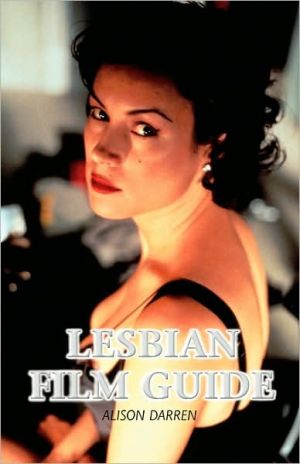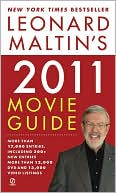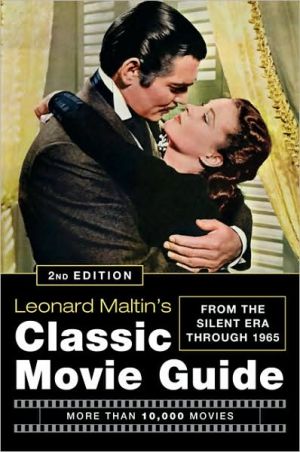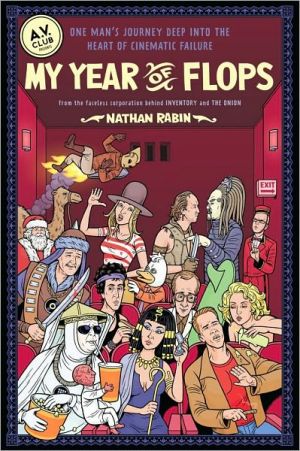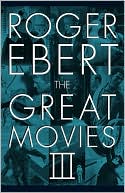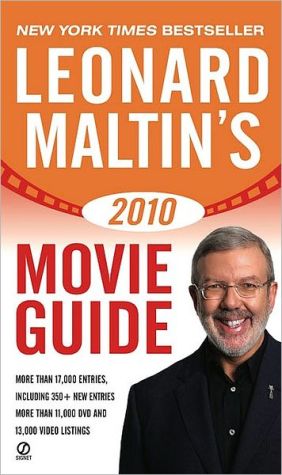Lesbian Film Guide
This A-Z guide to lesbians and lesbianism in the movies contains reviews, gossip, facts and commentary on over 200 films, including specifically lesbian films such as "Go Fish" and "Desert Hearts" as well as films with a lesbian character or theme, like "The Children's Hour" and "The Hunger".
Search in google:
The celluloid lesbian inhabits a world of extremes in which she is either frigid or insatiable, innocent or seductress, victim or villain. This alphabetical reference covers "lesbian films" such as as well as films that contain a lesbian character, theme, or subtext, such as and , with some 200 reviews of mainstream and independent films. Includes indexes of directors, countries of origin, and actors. The author works in the museum and heritage industry. Annotation c. Book News, Inc., Portland, OR
\ \ \ \ \ Excerpt\ The Films\ \ \ Les Abysses 1962\ \ \ Director: Nico Papatakis. Country: France. Screenplay: Jean Vauthier. Production company: Lenox Films. Duration: 96 mins, black and white\ \ \ Cast: Francine Berge (Michele), Colette Berge (Marie-Louise), Pascale de Boysson (Elizabeth), Paul Bonifas (M. Lapeyre), Colette Regis (Mme Lapeyre)\ \ \ Story based on an actual case in France that inspired Jean Genet to write The Maids. Two sisters are employed as servants in the home of Monsieur, Madame and their daughter Elizabeth. Gradually the maids rebel against their repression until in a terrible outburst they exact a violent revenge on their masters.\ \ \ Michele and Marie-Louise, the two young sisters at the centre of the drama, are presented as deranged from the first moment we see them. Although we pity their circumstances, we fear more for their unlucky masters than we do for the odd siblings. The strange girls contrive to torment the householders in small ways at first — tearing down bits of wallpaper and breaking roof tiles. But confrontation starts soon afterwards when the maids are not scared to answer back to their initially bemused employers. The young daughter of the house treats Marie-Louise with kindness, but this is by turns welcomed or ridiculed. Eventually the violence escalates out of control as feelings are given furious expression and all the individuals apply extraordinary measures of mental and physical cruelty upon each other. Exceedingly violent for the time.\ As far aslesbianism is concerned, in real life the sisters were involved in a fully sexual incestuous relationship but we see little evidence of that here. Instead there is just the odd physical embrace and the merest hint of something more.\ \ \ See also: other versions of the same story, SISTER MY SISTER and THE MAIDS.\ \ \ Afternoon Breezes (Kazetachi No Gogo) 1980\ \ \ Director: Hitoshi Yazaki. Country: Japan. Production company: Shunichi Nagasaki. Duration: 106 mins, black and white\ \ \ Cast: Setsuko Aya (Natsuko), Naomi Ito, Hiroshi Sugita, Mari Atake\ \ \ Tokyo. Natsuko is a nursery school teacher. Mitsu is a hairdresser. They share a flat, but for Natsuko the relationship is more than just friendship, for she is desperately in love with the man-chasing Mitsu.\ \ \ Remarkable feature by Japanese director Hitoshi Yazaki, who was just twenty-four when he made this debut. His view of Natsuko's hopeless crush on her heterosexual friend is a sombre and doomed account of unrequited love. Natsuko is portrayed as selfish, childish and obsessive. Although the strategies she devises to try to win her friend over are blunt and unsophisticated (she tries to persuade Mitsu's womanizing boyfriend to stray by offering herself as bait), one cannot help but feel twinges of pity at her predicament and her longing. She is strongly contrasted with Mitsu, who is similarly selfish but with a different motivation — she wants a man to marry and is searching for a good provider.\ Mitsu is, of course, oblivious to Natsuko's growing obsession with her and sees nothing odd in the gestures and gifts of love with which she is presented. An expensive and thoughtful birthday present — a necklace — is received casually (compared to Mitsu's boyfriend's careless present of perfume samples, which are received with flirtatious gratitude). Later Natsuko gives her beloved Mitsu a lighter, which she in turn passes on to her boyfriend without a thought. These, and other achingly sad observations of the endless small hurts suffered by those caught up in unrequited love, are the main strength of the film. However, filmed in black and white, and with several sequences in real time, Afternoon Breezes is a touch ponderous and suffers greatly from its low budget. Nevertheless, the extraordinary performance by Setsuko Aya as the immature, lovelorn Natsuko is something to wonder at.\ \ \ Alien: Resurrection 1997\ \ \ Director: Jean-Pierre Jeunet. Country: US. Screenplay: Joss Whedon. Production company: Twentieth Century Fox. Duration: 105 mins, colour\ \ \ Cast: Sigourney Weaver (Ripley 8), Winona Ryder (Call), Dominique Pinon (Vriess), Ron Perlman (Johner), Gary Dourdan (Christie), Michael Wincott (Elgyn), Kim Flowers (Hillard)\ \ \ Somewhere in deep space on board a United Systems Military starship, aliens are being harvested by unethical humans for future use. A band of pirates lands on the spaceship with the cargo commissioned by the military — frozen humans who will act as hosts for new baby aliens. But among the pirates is Call, a freedom fighter who — unknown to everyone — intends to sabotage the operation. In the meantime the aliens break free from their prison and the pirates find they have a real fight on their hands. Only one person seems able to help them, a strange woman known as Ripley 8 ...\ \ \ At the end of Alien 3 Ellen Ripley threw herself suicidally into a melting-pot to ensure she did not give birth to the alien that was growing inside her. Now she's back, cloned from blood taken from her body just before her untimely death. Ripley is the subject of an experiment by unscrupulous persons to extract the Alien from her body. But two hundred years on she's not quite the woman we used to know. Alien DNA has found its way into her bloodstream and now Ripley 8 (there were seven unsuccessful cloning attempts before she was created) demonstrates some remarkable qualities, including extraordinary muscular dexterity and acid for blood. She has also lost much of the compassion that drove her to fight for the lives of others in the previous films. Now she really couldn't care less.\ An excellent Alien movie, a real return to form after the wretched and morbid Alien 3. Now the fabulous Ripley, both mind and body fantastic, must battle something that is in many senses a part of her. Like all of the Alien films, on one level this is still simply a brilliantly clever sci-fi slasher movie and none the worse for it. But if it's psychological subtexts you want, Alien: Resurrection is the film for you. Questions about humanity, the nature of what it is to be human, about cloning, progeny and life itself are there if you want them. And in the final reel comes one of the saddest, most unexpectedly moving climaxes ever to end a movie.\ Of course, there is no lesbianism as such in Alien: Resurrection. But there is something, definitely something, going on between Ripley 8 and Call. When the two first meet it is in Ripley 8's cell where she is sleeping. Call is wielding a knife with the intention of releasing Ripley from her `mostly human, partly alien' state. Ripley 8 wakes and, unperturbed, observes the elfin girl kneeling over her. `So are you going to kill me ... or what?' she asks, with an almost kinky amusement. Or what indeed. The two do not fight but instead join forces (inasmuch as Ripley 8 will align herself with anything). A little later Call is injured in her abdomen. Ripley 8 puts her fingers into the wound and ... well it's not exactly DESERT HEARTS but your stomach might still drop a little watching it.\ It is fascinating (though hardly surprising) that only at this point — in the fourth Alien film and when Ripley is definitely no longer herself — that the vaguest possibility of lesbianism is allowed to enter the proceedings. Right from the beginning of the series Flight Officer Ellen Ripley — the greatest movie heroine ever and an iconic presence for so many lesbians — was always implicitly heterosexual (although uninvolved in a relationship with a man for the first two films). But Ripley 8 is a bit of an alien, and therefore able to be distinctly odd in other ways — a flirtation with lesbianism is not unexpected ...\ Sigourney Weaver is, as ever, sensational in the role which has been hers alone for twenty years. Winona Ryder makes a delicate, winsome Call, a girl partner for the impossibly grown-up Ripley 8. It is interesting to note that Winona was a big fan of Sigourney in her teen years and had a picture of Ripley above her bed. Well, didn't we all? ...\ \ \ All over Me 1996\ \ \ Director: Alex Sichel. Country: US. Screenplay: Sylvia Sichel. Production company: Medusa Pictures. Duration: 90 mins, colour\ \ \ Cast: Alison Folland (Claude), Tara Subkoff (Ellen), Cole Hauser (Mark), Wilson Cruz (Jesse), Ann Dowd (Anne), Leisha Hailey (Lucy), Pat Briggs (Luke)\ \ \ Hell's Kitchen, New York, in the present day, and life is not easy for teenager Claude. Left largely to look after herself by an uncaring mother, her time is spent working in the local pizza restaurant or hanging out with best friend Ellen. Claude is in love with Ellen, but she in turn has rough drug-dealer boyfriend Mark in tow. Claude watches helplessly as Ellen slides towards addiction.\ \ \ Powerful low-budget coming-of-age drama distinguished by extraordinary performances from the two young leads. If you didn't get enough teenage angst when you were there yourself, here is a chance to catch up and relive the moments you've tried so hard to forget. Remember being fifteen, clumsy, gauche and with nothing to say? Feeling the pain of seeing your beloved best friend in the arms of the most unsuitable boy around? Not forgetting, of course, having to listen to her tell you about the wonderful sex they're having? It's all here, perfectly realized, against a backdrop of dirty New York streets and violent homophobia. Still, although Claude may not have much idea of what she wants from her life, she knows for sure she's a lesbian. Very positively, Ellen's rejection does not stop Claude's interest in girls, and soon she takes tentative steps towards someone else. But the timbre of the movie can be gauged by the Patti Smith poster on Claude's wall. You know what you're in for.\ \ \ Note: Alison Folland also features in the brilliant Gus Van Sant black comedy To Die For (1995). Alison plays Lydia, grungy teen acolyte infatuated with Nicole Kidman's ambitious cable TV weather girl Suzanne Stone. In the story the enamoured adolescent indirectly helps ruthless Stone kill her husband. When the going gets tough Suzanne accuses the hapless girl of having `lesbian tendencies'.\ \ \ See also: ONLY THE BRAVE for more teenage blues.\ \ \ Anne Trister 1986\ \ \ Director: Lea Pool. Country: Canada. Screenplay: Marcel Beaulieu and Lea Pool. Production company: Films Vision 4/National Film Board of Canada. Duration: 115 mins, colour\ \ \ Cast: Albane Guilhe (Anne), Louise Marleau (Alix), Lucie Laurier (Sarah), Guy Thauvette (Thomas), Hugues Quester (Pierre), Nuvit Ozdogru (Simon), Kim Yaroshevskaya (Mother)\ \ \ Anne is a young Jewish painter living in Switzerland. Grief-stricken after her father dies, she leaves behind her boyfriend Pierre and returns to Montreal to stay with her older friend Alix. Time passes and, in an outpouring of creative despondency, Anne paints a giant mural. She also finds she has fallen in love with Alix.\ \ \ Slow and reflective, Anne Trister is a drama of delicate sensibilities and refinement. We are taken on a journey — conducted at a stately pace — through Anne's emotional development as she progresses from grieving daughter to recovered adult woman. Anne's distress at losing her father opens the proceedings, and the burial in the Israeli desert is a beautiful sequence. The return to Quebec moves the plot along, and we know the trip will prove to be a turning-point for Anne in several respects. Alix obligingly offers her a place to live while she sorts herself out, despite the fact that this causes friction with Alix's lover Thomas.\ Alix is a child psychiatrist who, in the course of her daily work is attempting to help Sarah, a disturbed child. The film draws a parallel between the child and Anne, and the demanding emotional attachments both form with Alix. Meanwhile Anne's huge abstract painting becomes the core of the film, with the artistic process strikingly reflecting Anne's development and recovery.\ The lesbian theme is slight and really of only minor consequence. Of the two women, Alix appears the most likely lesbian figure but it is Anne who is most interested and makes the first move — a gentle kiss in the studio from which Alix withdraws. Things advance a little but not very far. Strangely, the evolving relationship between the two women seems rather uninteresting. A blankness of emotion, rather than an urgent feeling of love or desire, prevails, and both women seem to be `trying on' the idea of a lesbian relationship rather than being emotionally drawn into it. Anne decides that she no longer loves her boyfriend, but she wants much more from Alix than Alix is swilling or able to give. The film ends with them separating as friends. A chronicle of an artist's progress rather than a lesbian love story.\ \ \ Another Way (Egymásra Nézve) 1982\ \ \ Director: Karoly Makk. Country: Hungary. Screenplay: Erzsebet Galgoczi and Karoly Makk (based on the book Torvenyen Belul by Erzsebet Galgoczi). Production company: Dialog Studio. Duration: 109 mins, colour, subtitled\ \ \ Cast: Jadwiga Jankowska-Cieslak (Eva), Grazyna Szapolowska (Livia), Josef Kroner (Editor), Gabor Reviczky (Fiala)\ \ \ Hungary 1958. Two journalists, Eva and Livia, work on a newspaper called The Truth. Eva, an idealist, falls for the married, more conventional Livia. The two begin a precarious flirtation which eventually develops into a relationship. Livia's husband begins to suspect what is happening, while Eva faces growing problems at work. The two decide to flee the country.\ \ \ Karoly Makk's film is based on an autobiographical book written by the `Eva' character, and with the exception of the ending, the story is very much a true account of real events. Another Way has two subjects, one is the lesbian relationship, the other is the political upheaval going on two years after the revolution in Hungary. By turns sombre and uplifting, with a beautiful, mournful jazz score, Another Way coveys the astonishing degree of courage required to face the authorities both in terms of expressing a sexual preference and the need for political freedom.\ Polish actress Jadwiga Jankowska-Cieslak plays Eva with a veracity that earned her Best Actress at the Cannes Film Festival (incidently, Grazyna Szapolowska is also Polish — no Hungarian actresses could be found to fill the roles). Eva's need for emotional and professional integrity causes her to risk everything by pursuing the woman she loves and at the same time challenging her editor over the lies printed in the newspaper as required by the state. This is living dangerously by anyone's estimation, and in that context Livia's initial reluctance to involve herself with Eva is understandable. Both women are shown in a realistic light, which is less than flattering on occasions. Eva is surprisingly brutal when dealing with a former lover who turns up at her door needing help. Livia is shown to be selfish and ultimately too weak to cope with the problems she faces. In terms of her appearance, she is rather glamorous and well dressed with blond coiffured hair. Eva, by comparison, has a pragmatic approach to her clothing: she wears her hair short and plain, and wears inexpensive clothes (money doesn't go so far without a husband supporting you). Neither are heart-warming characters but their predicament is enough to ensure audience involvement. Unexpectedly, there are one or two amusing exchanges, including a conversation between Eva and a bewildered police chief who does not understand lesbianism. `When you look at me,' he asks, completely confused, `don't you see me as a man?' `Of course,' replies Eva. `You are a man, aren't you?'\ Makk had some difficulty getting the film made, for reasons of sexuality and politics equally. He once remarked that when the Hungarian authorities saw the film they were `not exactly charmed'. Nevertheless, the film was released all over the world, and to much acclaim.\ \ \ Antonia's Line 1995\ \ \ Director: Marleen Gorris. Country: Netherlands, Belgium and GB. Screenplay: Marleen Gorris. Production company: Antonia's Line International. Duration: 102 mins, colour\ \ \ Cast: Willeke van Ammelrooy (Antonia), Els Dottermans (Danielle), Dora van der Groen (Allegonde), Veerle van Ovedoop (Thérèse), Mil Seghers (Kromme Vinger), Jan Decleir (Boer Bas), Elsie de Brauw (Lara), Reinout Bussemaker (Simon)\ \ \ At the age of eighty-five Antonia decides she has reached her last day on earth. She uses the time to reflect on her life. She thinks back to the end of World War II, and the forty years that have followed.\ \ \ Wonderful, moving, funny, gritty and sometimes whimsical drama following the fortunes of a number of idiosyncratic characters living in a small village in Holland. The chronicle sees Antonia return home after the war to make a life for herself on a farm as part of a small, patriarchal community. She has a daughter, Danielle, and the two make a home despite difficult and sometimes brutal conditions. Antonia herself is pragmatic and just. She protects innocents from the bullying (sometimes worse) of the less pleasant members of the village. Thus the put-upon, the social misfits and the badly treated flock to her, and her extended family becomes a place of safety for the dispossessed.\ Danielle, meanwhile, grows up and decides she wants a child without the benefit of a husband. Unsurprised, Antonia locates a suitable sperm donor and soon Thérèse is born, a little girl so intelligent she is pronounced a prodigy. As Thérèse grows up Danielle provides her with a tutor, Lara. This proves a turning point for Danielle, who falls in love with Lara. In an amusing sequence the women meet in the family kitchen, and as their interest in each other grows, a sensuous discussion about artichokes develops, leaving the young child annoyed and forgotten between them. Danielle and Lara form a close and loving relationship which lasts, it is implied, all of their lives.\ Excellent performances all round and a fluid directing style ensure that the saga never palls or becomes confusing. The lesbian relationship may be simply part of the general mêlée, but it is warmly presented and endorsed throughout. Lovely.\ \ \ See also: MRS DALLOWAY by the same director.\ \ \ L'Araignée de Satin: see under THE SATIN SPIDER\ \ \ At First Sight (Coup de Foudre; Entre Nous) 1983\ \ \ Director: Diane Kurys. Country: France. Screenplay: Diane Kurys and Alain Le Henry (based on the book by Olivier Cohen and Diane Kurys). Production company: Partners Productions. Duration: 111 mins, colour\ \ \ Cast: Miou-Miou (Madeleine), Isabelle Huppert (Lena), Guy Marchand (Michel), Jean-Pierre Bacri (Costa), Patrick Bauchau (Carlier), Robin Renucci (Raymond)\ \ \ True story of the lifelong friendship between two women set in France after World War II. The lesbian frustration quotient reaches an all-time high in this film, so beautifully told but with an ambiguous relationship at its core that will leave you longing for something more explicit. The story is based on director Diane Kury's mother, Lena, and her close friend Madeleine, with whom she sets up a business.\ \ \ The two women meet by chance at a school function and, to the strains of `I Wonder Who's Kissing Her Now', they find they are immediately attracted to each other. Although they have both made marriages of convenience, the similarity stops there. Lena, a quiet housewife with a solid, caring husband, is contrasted with artist Madeleine, whose actor partner is forever attempting silly get-rich-quick schemes to make money. Set against the backdrop of 1950s Lyon, the film moves along splendidly, demonstrating the devotion between the two women but suggesting, at all times, that there is nothing physical going on. Instead the emotional intensity of passionate feeling is expressed by Lena's husband Michel, who suspects he is losing his wife and tearfully pleads with her to give Madeleine up. To no avail, however, and the women leave their husbands to set up a dress shop together. The dedication between the two is undeniable, yet the emotional feelings they share are so understated as to render the relationship most perplexing. They refer to each other throughout the film in the formal `vous' form, rather than the informal (and therefore more appropriate) `tu', as if they wish to draw a firm line between them. However, there are moments of delicacy, warmth, tenderness, contentment, and — oh so briefly — a whisper of eroticism. It's a lovely film, and a postscript from Diane Kurys at the end dedicates it to both her parents and Madeleine.
